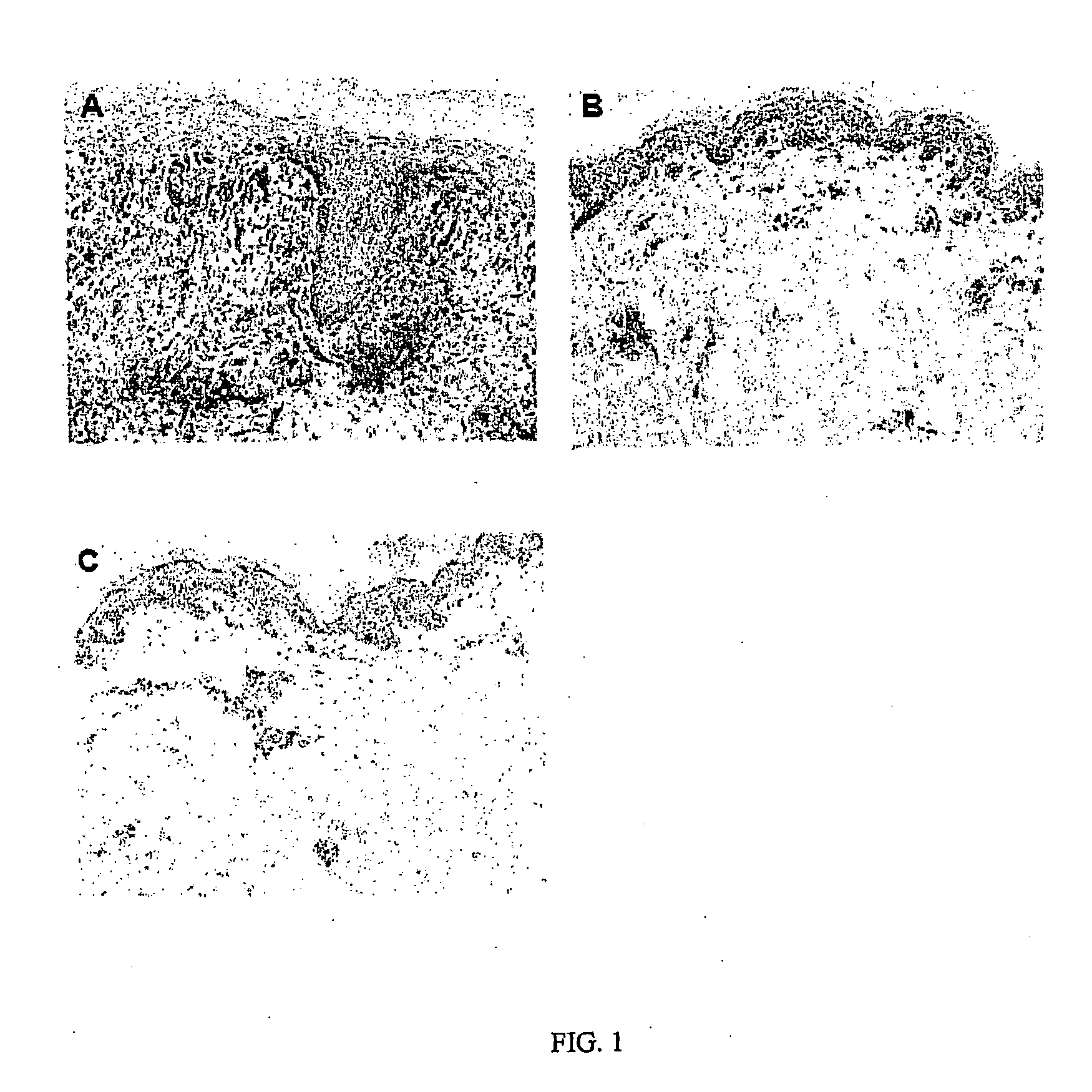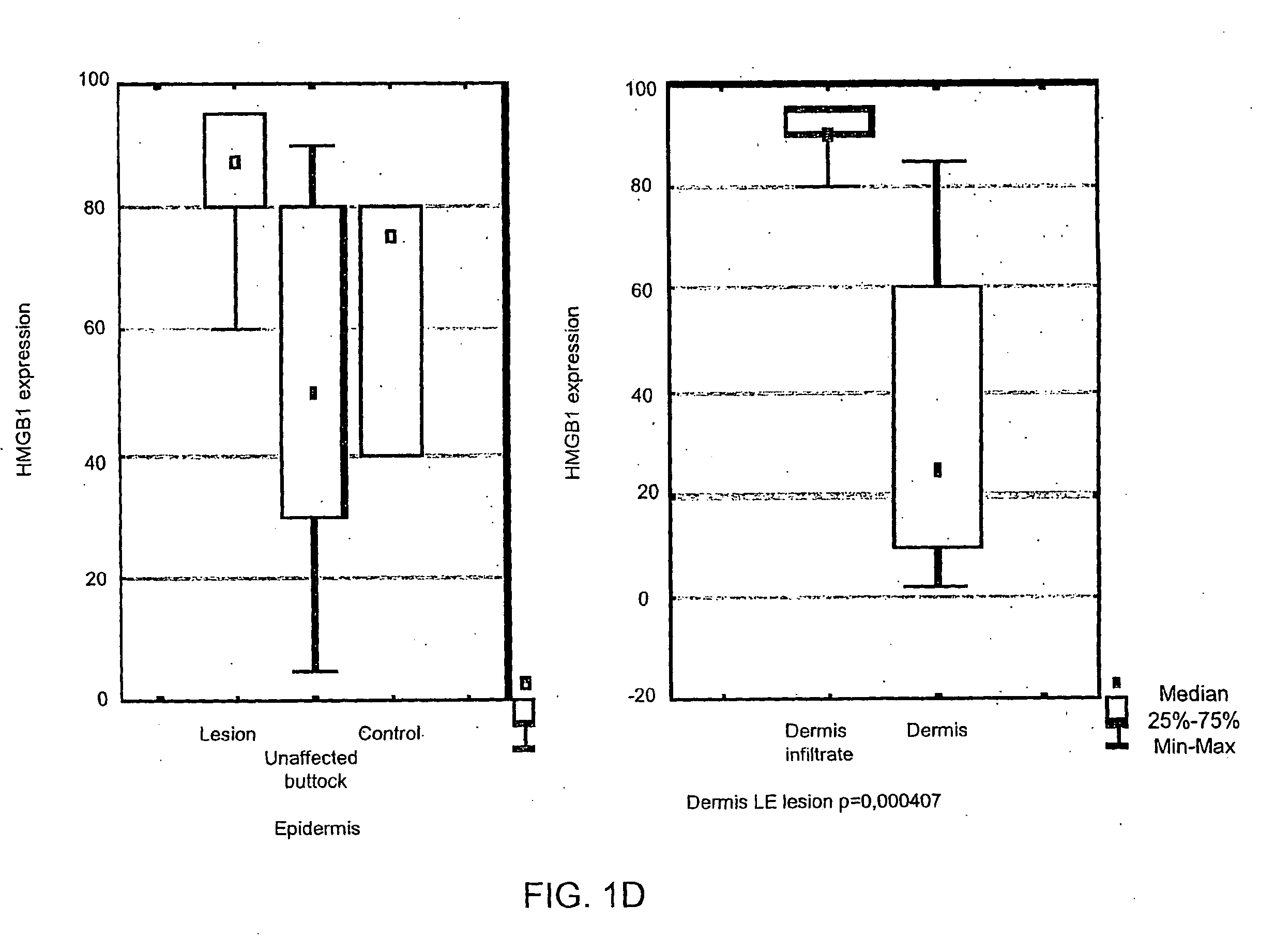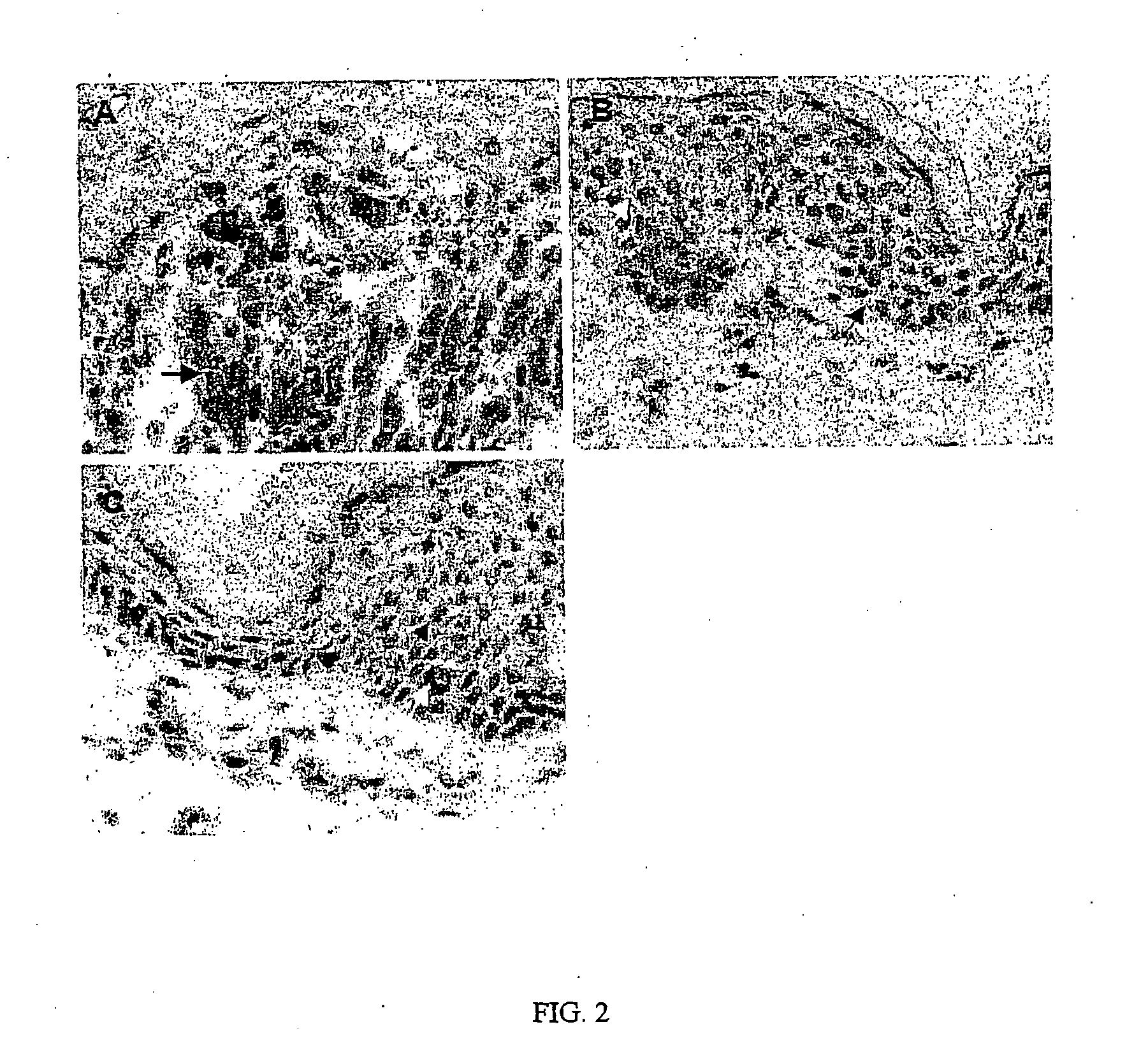Use of HMGB1 antagonists for the treatment of inflammatory skin conditions
a technology of inflammatory skin conditions and hmgb1 antagonists, which is applied in the direction of immunological disorders, antibody medical ingredients, peptide/protein ingredients, etc., can solve the problems of severe life-threatening, severe psychological effects, insufficient or inadequate treatment, etc., and achieve the effect of preventing or decreasing tissue damag
- Summary
- Abstract
- Description
- Claims
- Application Information
AI Technical Summary
Benefits of technology
Problems solved by technology
Method used
Image
Examples
example 1
Increased Expression and Cytoplasmic / Extracellular Localization of the Pro-Inflammatory Cytokine HMGB1 in Cutaneous Lesions of Lupus Erythentatosus
Introduction
[0221]We investigated the role of HMBG1 in cutaneous manifestations of lupus, by monitoring the expression and subcellular localization of HMGB1 and the pro-inflammatory cytokines, TNF-α and IL-1β, in punch biopsies from patients with cutaneous lupus erythematosus (CLE). Specifically, HMGB1 expression and localization was analyzed in lesions from patients with subacute cutaneous lupus erythematosus (SCLE) and discoid lupus erythematosus (DLE). SCLE is defined as a non-scarring skin eruption that is associated with Ro / SSA-autoantibodies and photosensitivity. Discoid lupus erythematosus (DLE) is characterized by skin lesions consisting of red plaques with thick scale and follicular plugs. We also performed single nucleotide polymorphism (SNP) analysis on samples from these CLE patients to determine the frequency of a particular ...
example 2
CLE-Induced Photosensitivity is Associated with Changes in the Expression of HMGB1 Protein in the Epidermis and Dermis of Affected Individuals
Introduction
[0236]Cutaneous lupus erythematosus (CLE) is a chronic autoimmune skin disease. The majority of patients diagnosed with CLE display photosensitivity, or abnormal sensitivity to sunlight. This condition is characterized by the formation of severe lesions (i.e., CLE lesion flare) that can manifest up to 2 weeks after exposure to sunlight and often last longer than a week. CLE patients have a decreased threshold for induction of erythema after exposure to UV irradiation (UV R) (Orteu, C. H., et al., Photodermatol. Photoimmunol. Photomed. 17(3):95-113 (2001)). Both UVB and UVA irradiation (UVB R and UVA R), and in some cases visible light, can induce lesions in CLE patients (Orteu, C. H., et al., Photodermatol. Photoimmunol. Photomed. 17(3):95-113 (2001); Sanders, C. J., et al., Br. J. Dermatol. 149(1):131-137 (2003)). Notably, the con...
example 3
Inducible Expression and Secretion of HMGB1 in Human Skin Keratinocytes at Birth
Introduction
[0255]Erythema Toxicum Neonatorum is an acute, innate immune response of transitory duration, that manifests at birth when microbes penetrate into the skin of the human newborn. Histologically, the rash (FIG. 12) is characterized by an upregulation of proinflammatory activity and a local recruitment of immunocytes, including macrophages. High mobility group box chromosomal protein 1 (HMBG1) is a proinflammatory cytokine that is released by macrophages in response to microbial challenge. Here, we reasoned that keratinocytes might secrete HMGB1 in response to the first colonization of the skin by microbes in human newborns and that HMBG1-mediated inflammation might play a role in the development and progression of Erythema Toxicum and other inflammatory skin conditions.
Materials and Methods
Patient Samples
[0256]Punch biopsies of 3 mm were obtained after local anaesthesia from 6 infants with, and...
PUM
 Login to View More
Login to View More Abstract
Description
Claims
Application Information
 Login to View More
Login to View More - R&D
- Intellectual Property
- Life Sciences
- Materials
- Tech Scout
- Unparalleled Data Quality
- Higher Quality Content
- 60% Fewer Hallucinations
Browse by: Latest US Patents, China's latest patents, Technical Efficacy Thesaurus, Application Domain, Technology Topic, Popular Technical Reports.
© 2025 PatSnap. All rights reserved.Legal|Privacy policy|Modern Slavery Act Transparency Statement|Sitemap|About US| Contact US: help@patsnap.com



